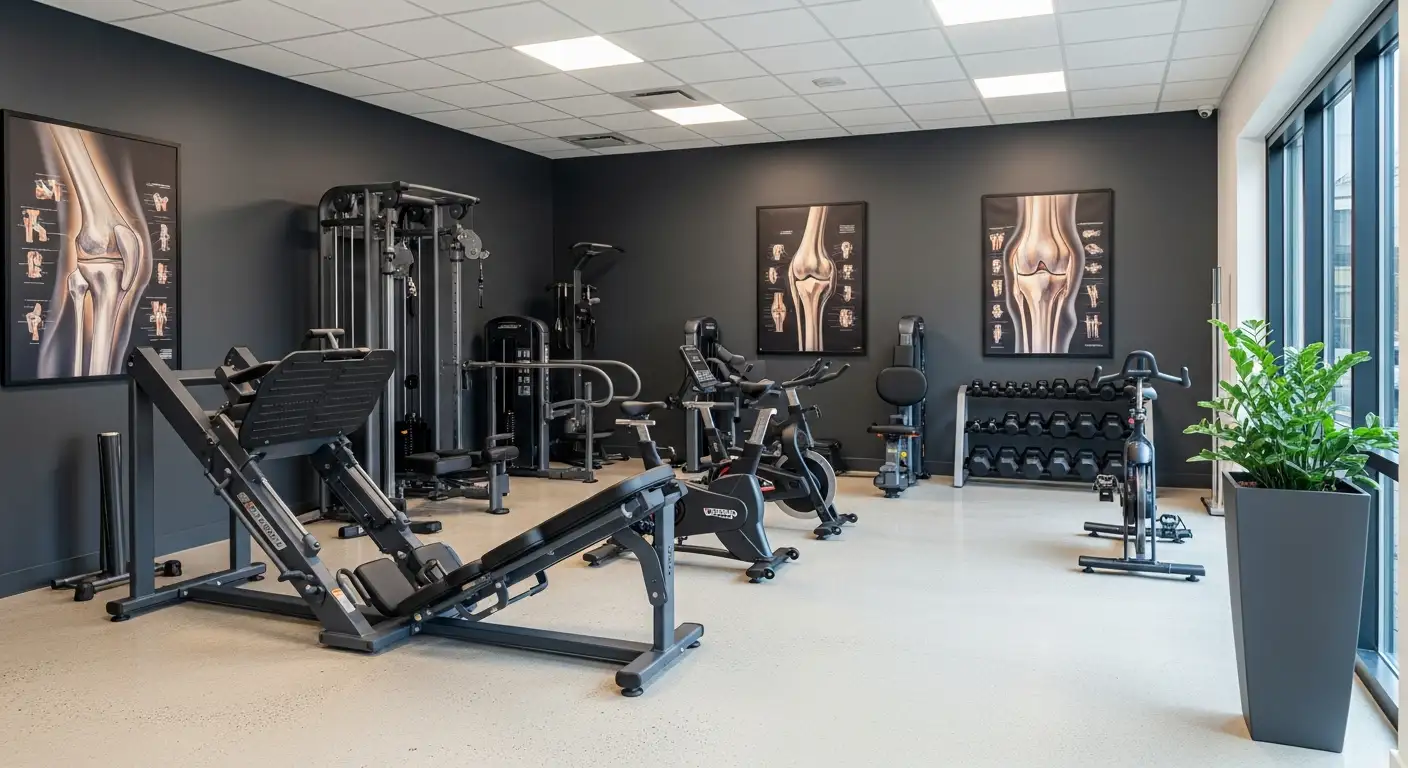Understanding Knee Pain from Sciatica
Sciatica, a condition often associated with lower back pain, can also cause knee pain. Understanding the relationship between sciatica and knee pain is essential in effectively managing and treating this discomfort.
What is Sciatica?
Sciatica refers to the irritation or compression of the sciatic nerve, which is the longest nerve in the body. The sciatic nerve originates in the lower back and travels down through the buttocks, back of the thigh, and branches out to the lower leg and foot. It is responsible for transmitting sensory and motor signals to these areas of the leg.

How Does Sciatica Cause Knee Pain?
Sciatica can cause knee pain due to the compression or irritation of the sciatic nerve, resulting in a radiating pain that can extend down to the knee. As the sciatic nerve travels down the leg, it can affect the knee through a branch called the peroneal nerve. This can lead to various symptoms, including:
Sciatica-related knee pain is more commonly observed in individuals with spine diseases that cause an abnormal gait pattern, which can stress the knee and result in localized pain [2]. Additionally, arthritis in the spine pressing on the nerves at the L3-L4 level can cause pain, numbness, tingling, or weakness that radiates down to the knee.
Proper diagnosis and treatment are crucial for effectively managing knee pain caused by sciatica. Understanding the underlying causes and seeking appropriate medical guidance can help individuals find relief and improve their overall quality of life.
Managing Knee Pain from Sciatica
When it comes to managing knee pain caused by sciatica, there are several approaches that can help alleviate discomfort and improve overall function. These include stretching and strengthening exercises, maintaining proper posture and body mechanics, and seeking physical therapy.
Stretching and Strengthening Exercises
Stretching and strengthening exercises targeting the lower back and hips can be beneficial in reducing pressure on the sciatic nerve and relieving knee pain associated with sciatica. By improving flexibility and reducing muscle tension, these exercises can help alleviate discomfort and promote better mobility.
Some stretching exercises that can be beneficial for knee pain from sciatica include knee-to-chest stretches and piriformis stretches. These movements help release tension in the lower back and hips, reducing pressure on the sciatic nerve [3]. Strengthening exercises, such as bridging, can help build muscle in the back, abdomen, and legs, providing support to the spine and reducing pressure on the sciatic nerve.
Posture and Body Mechanics
Maintaining proper posture and body mechanics play a crucial role in managing knee pain from sciatica. Poor alignment can exacerbate pressure on the sciatic nerve, leading to increased discomfort [1]. It's important to focus on sitting and standing with a neutral spine, avoiding slouching or hunching forward. Engaging the core muscles and maintaining good alignment can help alleviate pressure on the sciatic nerve and reduce knee pain.
Physical Therapy for Knee Pain
Physical therapy is a valuable treatment option for individuals experiencing knee pain due to sciatica. A physical therapist can provide personalized exercises and stretches that target the underlying causes of the discomfort. They can help improve flexibility, reduce stiffness, and strengthen the muscles surrounding the knee and hip joints, providing relief from knee pain associated with sciatica.
Under the guidance of a healthcare professional, physical therapy can be an effective way to manage knee pain caused by sciatica. A tailored exercise plan can address the specific needs and limitations of an individual, targeting the underlying causes of the pain and improving overall function [6]. Physical therapists may also incorporate other modalities such as heat or cold therapy and manual techniques to further alleviate pain and promote healing.
By incorporating stretching and strengthening exercises, practicing good posture, and seeking physical therapy, individuals with knee pain from sciatica can take proactive steps towards managing their discomfort and improving their quality of life. It's important to consult with a healthcare professional for personalized guidance and treatment options.
Treating Knee Pain from Sciatica
When it comes to addressing knee pain caused by sciatica, there are various treatment options available. In more severe cases where conservative treatments do not provide sufficient relief, medications, injections, or surgery may be necessary. It is important to consult with a healthcare professional to determine the most appropriate course of action.
Medications and Injections
Medications can play a crucial role in managing knee pain from sciatica. Nonsteroidal anti-inflammatory drugs (NSAIDs), such as aspirin or ibuprofen, are often recommended as initial measures to reduce pain and inflammation. These over-the-counter medications can provide temporary relief, but it is important to follow the recommended dosage and consult with a healthcare professional if you have any underlying medical conditions or are taking other medications.
In some cases, stronger prescription medications may be prescribed to manage pain associated with sciatica. These may include muscle relaxants, oral corticosteroids, or opioid medications. However, these medications are typically used for short-term relief due to their potential side effects and risk of dependency. It is crucial to use them under the guidance of a healthcare professional and closely monitor their usage.
Injections can also be an option for managing knee pain from sciatica. Corticosteroid injections, administered directly into the affected area, can provide temporary pain relief by reducing inflammation around the compressed nerve. Additionally, nerve root blocks or epidural steroid injections may be considered to target the specific nerve causing the pain. These injections are typically performed by a healthcare professional and can provide significant relief for some individuals.
Surgical Options
In severe cases of knee pain from sciatica, when conservative treatments have not been effective, surgery may be considered. Surgery is usually reserved for situations where there are signs of nerve damage or if the pain persists despite other treatments [7]. The specific surgical procedure will depend on the underlying cause of the sciatica and the individual's unique condition.
Some surgical options for knee pain from sciatica include:
It is important to note that surgery is typically considered a last resort after other conservative treatments have been exhausted. The decision to undergo surgery should be made in consultation with a healthcare professional who can evaluate the individual's specific condition and recommend the most appropriate course of action.
Treating knee pain from sciatica requires a comprehensive approach that takes into account the individual's unique circumstances and the severity of their symptoms. Whether through medications, injections, or surgery, the goal is to reduce pain, improve function, and enhance overall quality of life.
Lifestyle Changes for Knee Pain Relief
When it comes to managing knee pain from sciatica, incorporating lifestyle changes can play a significant role in finding relief. By making certain adjustments to your daily routine, you can help alleviate discomfort and promote healing. Here are three lifestyle changes that can contribute to knee pain relief: heat and cold therapy, restorative sleep, and avoiding prolonged sitting.
Heat and Cold Therapy
Applying heat and cold therapy to the affected area can be beneficial in managing knee pain caused by sciatica. Alternating between heat and cold can help reduce inflammation and provide temporary pain relief. It is recommended to apply an ice pack for 10-15 minutes to reduce inflammation, followed by 20-30 minutes of heat therapy to relax the muscles and improve blood flow. You can use a heating pad or a warm towel for heat therapy, and an ice pack or a bag of frozen peas for cold therapy. Be sure to use a cloth or towel as a barrier between the heat or cold source and your skin to prevent burns or frostbite.
Restorative Sleep
Restorative sleep plays a crucial role in reducing knee pain associated with sciatica. Quality sleep allows the body's inflammatory agents to work effectively, leading to a decrease in pain levels, particularly in the morning. It is important to create a sleep-friendly environment by ensuring a comfortable mattress, using supportive pillows, and maintaining a cool and dark bedroom [8]. Establishing a consistent sleep routine and practicing relaxation techniques before bed, such as deep breathing or meditation, can also contribute to restorative sleep and overall pain reduction.
Avoiding Prolonged Sitting
Prolonged sitting can worsen knee pain from sciatica. It is advised to avoid spending extended periods in a seated position to minimize discomfort. When sitting, maintaining proper posture is essential to prevent excessive pressure on the affected nerve. Take frequent breaks to stand, stretch, and walk around, as movement can help relieve compression on the irritated nerve [8]. If your work involves prolonged sitting, consider using a standing desk or an ergonomic chair that provides lumbar support and encourages better posture.
By implementing these lifestyle changes, you can help manage knee pain caused by sciatica and improve your overall well-being. Remember to consult with a healthcare professional for personalized advice and guidance in developing a comprehensive treatment plan.
Exercise and Movement for Knee Pain Relief
When it comes to finding relief from knee pain caused by sciatica, incorporating exercise and movement into your routine can be highly beneficial. Exercise helps improve flexibility, strengthen muscles, and reduce pressure on the sciatic nerve, thereby alleviating knee pain. In this section, we will explore three forms of exercise that can provide relief: walking and low-impact activities, yoga and Pilates, and physical therapy.
Walking and Low-Impact Activities
Engaging in regular walking and low-impact activities can help strengthen the muscles supporting the back, providing relief from knee pain caused by sciatica. These activities have the advantage of being gentle on the joints while still promoting movement and flexibility. Walking on flat surfaces or using an elliptical machine are excellent options for low-impact exercises.
It's important to start gradually and listen to your body. Begin with shorter durations and gradually increase the distance and intensity as your comfort level allows. Remember to wear supportive footwear that provides adequate cushioning and stability to protect your knees while walking.
Yoga and Pilates
Yoga and Pilates are highly recommended forms of exercise for individuals experiencing knee pain from sciatica. These practices focus on improving flexibility, balance, and strength in the lower body. Specific poses and exercises target the muscles and structures surrounding the sciatic nerve, providing relief from knee pain.
Yoga poses such as the child's pose, downward-facing dog, and pigeon pose can help stretch and release tension in the back and hips. Pilates exercises, such as leg circles and glute bridges, target the core and lower body, promoting stability and reducing strain on the knees.
When practicing yoga or Pilates, it's important to listen to your body and modify poses or exercises as needed. If you're new to these practices or experiencing severe knee pain, it's advisable to seek guidance from a qualified instructor to ensure proper form and technique.
Physical Therapy
Physical therapy, under the guidance of a healthcare professional, can be an effective way to manage knee pain due to sciatica. A physical therapist can provide a tailored exercise plan to target the underlying causes of the pain and improve overall function. They will assess your condition and create a personalized treatment program that may include specific exercises, stretches, and manual therapy techniques.
Working with a physical therapist can help you learn proper form, prevent further injury, and optimize your recovery. They will monitor your progress and make adjustments to your exercise routine as needed.
Incorporating walking, yoga, Pilates, or physical therapy into your routine can help alleviate knee pain caused by sciatica. Remember to start slowly, listen to your body, and seek guidance from a healthcare professional if needed. With consistency and proper technique, these exercises can contribute to improved flexibility, strength, and overall well-being.
Self-Care Tips for Knee Pain from Sciatica
When it comes to managing knee pain caused by sciatica, there are several self-care tips that can provide relief and support your overall well-being. These tips include stretching exercises, heat and cold therapy, maintaining proper posture, and utilizing over-the-counter pain relievers.
Stretching Exercises
Stretching exercises targeting the lower back, hips, and legs can help alleviate knee pain associated with sciatica. These exercises help reduce pressure on the sciatic nerve, promoting flexibility and improved blood flow. Regularly incorporating stretching into your routine can potentially reduce symptoms of sciatica and knee pain.
Heat and Cold Therapy
Heat and cold therapy can play a significant role in managing knee pain caused by sciatica. Applying a heat pack to the affected area can help relax the muscles and improve blood flow, providing relief and reducing discomfort. On the other hand, ice packs can help reduce inflammation and numb the area, offering a numbing effect and potentially alleviating pain.
Proper Posture
Maintaining good posture is essential in managing knee pain from sciatica. Proper alignment and body mechanics can reduce pressure on the spine and nerve roots, potentially alleviating symptoms in the knees. Being mindful of your posture throughout the day can help minimize unnecessary strain on your back and knees.
Medications and Over-the-Counter Pain Relievers
Over-the-counter nonsteroidal anti-inflammatory drugs (NSAIDs) can be used to help alleviate knee pain from sciatica. These medications can help reduce inflammation, relieve pain, and improve mobility in the affected knee. It is important to follow the recommended dosage and consult with a healthcare professional if you have any underlying medical conditions or concerns.
Incorporating these self-care tips into your routine can provide relief and support in managing knee pain caused by sciatica. However, it's important to note that these tips may complement other treatment options and lifestyle changes. If your knee pain persists or worsens, it is advisable to seek medical advice for further evaluation and guidance.
Understanding Sciatica and Knee Pain
When it comes to knee pain, sciatica can be a potential cause. Sciatica refers to the compression or irritation of the sciatic nerve, which can result in radiating pain that may extend down to the knee [1]. Understanding the causes of knee pain from sciatica, the typical duration of such pain, and the available conservative treatment options can help individuals seek appropriate care and find relief.
Causes of Knee Pain
Knee pain associated with sciatica can occur due to the impact on the sciatic nerve, which can lead to discomfort radiating down to the knee [2]. This pain may present as a dull ache, warm sensation, sharp pain, difficulty straightening the knee, buckling of the knee, or difficulty bearing weight on the knee. While knee pain from sciatica is relatively uncommon, individuals with spine disease or abnormal gait patterns may experience stress on the knee, resulting in local pain.
Other common causes of knee pain include degenerative arthritis of the knee joint, gout, knee joint infections, strains/sprains of tendons, ligaments, or muscles within the knee structure, as well as factors such as heavy physical activity or lack of physical activity.
Duration of Knee Pain from Sciatica
The duration of knee pain resulting from sciatica can vary from person to person. It depends on factors such as the underlying cause of sciatica, the severity of the compression or irritation of the sciatic nerve, and the effectiveness of the treatment approach. Knee pain from sciatica can be acute, lasting for a shorter period, or chronic, persisting for an extended duration. Seeking appropriate medical evaluation is crucial to determine the cause and duration of knee pain and to develop an appropriate treatment plan.
Conservative Treatment Options
In most cases, knee pain from sciatica can be effectively managed with conservative treatment options. These approaches aim to alleviate pain, reduce inflammation, and improve the underlying condition causing sciatica. Some common conservative treatment options for knee pain from sciatica include:
It's important to consult with a healthcare professional to determine the most suitable treatment plan for knee pain from sciatica. In severe cases, other treatment options, such as medications, injections, or surgery, may be necessary and should be discussed with a healthcare professional [1].
References
[2]:
[3]:
[4]:
[5]:
[6]:
[7]:
[8]:





